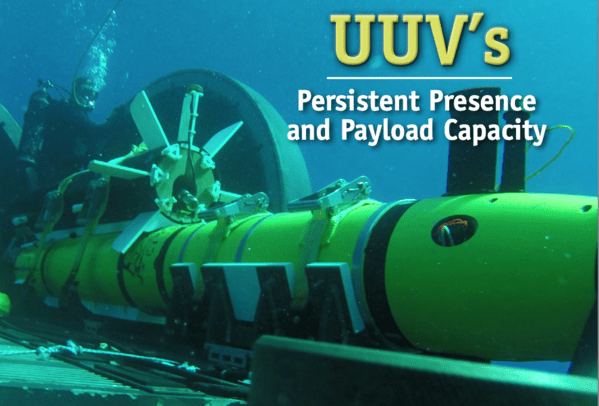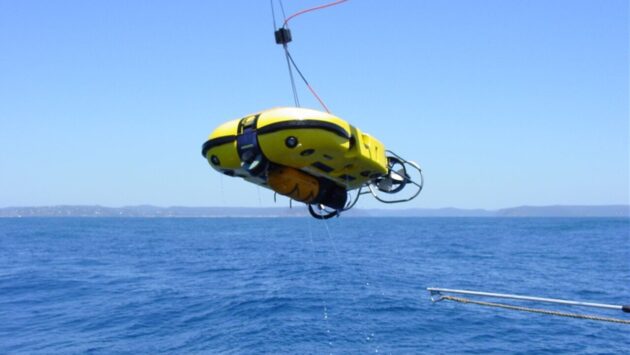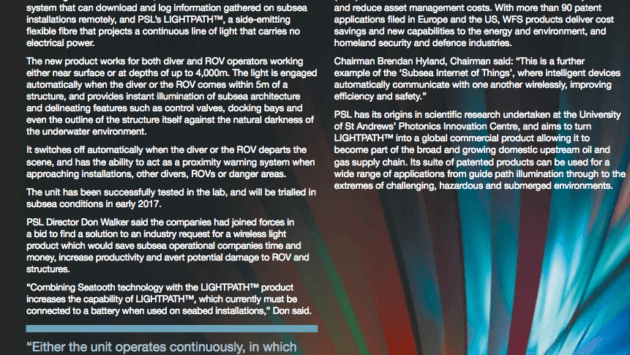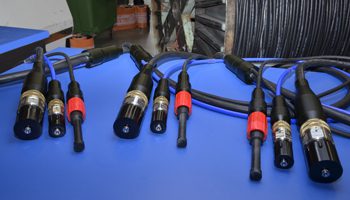SSN Capability Enhanced by UUV Launch and Recovery
Dry Deck Shelter and Tube Launch & Recovery Feature in SSN designs
Nuclear submarines (SSNs) are most stealthy and least detectable when operating highly independently and without significant off-hull communication. As UUVs start supplementing the SSN force, increased UUV independence will be pivotal. Improved UUV ability for online decision making in complex environments will drastically reduce the need for communications and therefore increase UUV independence.
The Razorback is a submarine-launched version of the Huntington Ingalls Industries (HII) REMUS 600 UUV. It has a capability for launch and recovery from a Dry Deck Shelter, a compartment than can be integrated in some submarine types. The Razorback UUV that has been modified for submarine use and Littoral Battlespace Sensing providing sensing of static and dynamic characteristics and features of the ocean environment in support of military operations.
The REMUS 600 UUV systems are deployed in a variety of configurations. Many different types of sensors and payloads are possible, but most are designed and used to survey the ocean bottom. Several other payloads are in development to support future mission plans and capabilities. The vehicle is capable of conducting operations for about 24 hours using an alkaline battery as its energy source. Subsequent missions require a full change out of battery packs. This system can be launched and recovered from many platforms, including a Submarine Dry Deck Shelter and Torpedo Tube Launch & Recovery.
Torpedo tube launched and recovered version of the Razorback will extend the reach of a submarine’s onboard sensing capability by performing Intelligence Preparation of the Operational Environment (IPOE) independent of the submarine. Razorback’s modular, interchangeable sensor packages will allow for further mission growth in the future.
The next iteration of the Razorback will simplify the process for submarine crews to launch and recover the vehicles on their own without putting divers in the water, and it will mark the beginning of a common Medium UUV program that will support both the submarine community and the explosive ordnance disposal community.
The Medium UUV will be a modular, open systems, and open architecture UUV. In the Razorback Torpedo Tube Launch & Recovery (TTL&R) configuration, it will provide submarine-based autonomous oceanographic sensing and data collection in support of intelligence preparation of the operational environment. In the Maritime Expeditionary MCM UUV (MEMUUV) system configuration, it will provide persistent surface-launched and recovered mine countermeasures (MCM). The MUUV will contain a common baseline vehicle architecture, including sensors and components, for the submarine and expeditionary configurations. Launch-and-recovery systems will reflect each configuration’s unique requirements and missions.
REMUS UUVs include implementation of the Unmanned Maritime Autonomy Architecture (UMAA). This standard focused on opening up autonomy interfaces for all UxVs, making them non-proprietary. As these standards mature and more platforms use them, they will enable rapid advancement of autonomy across all platforms that share this architecture. This first UUV contract to use these architectures is the Razorback, followed by LDUUV platforms.
Read More
REMUS 600 Razorback UUV Development




